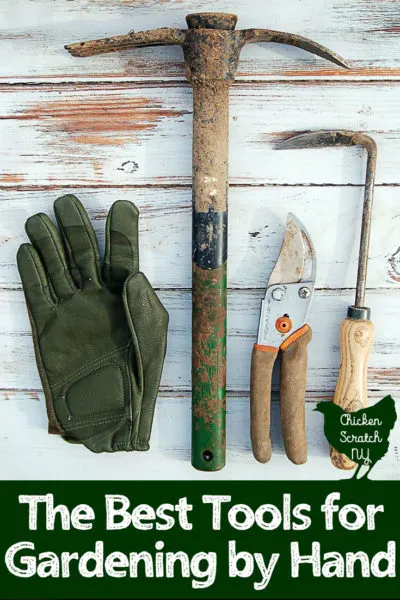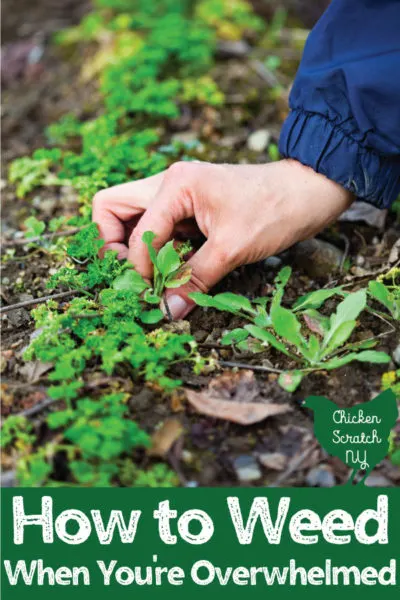Whether you’re growing yellow squash, pattypan, or zucchini you can’t go wrong planting summer squash. The massive plants are surprisingly easy to grow and so productive you’ll be sneaking squash onto your neighbor’s porch all summer.
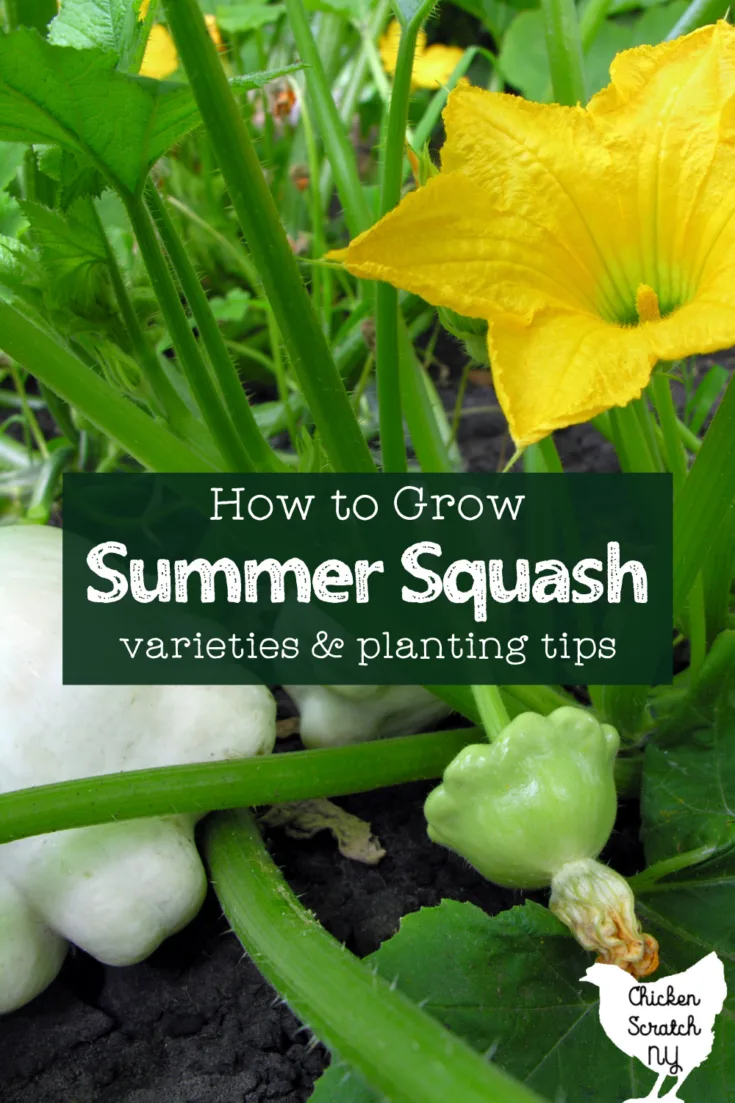
Summer squash is a pretty big category with a surprising amount of variety in shape and color, they all have a similar flavor but some varieties are especially delicious. All of the types of summer squash are in the Cucurbita family which also includes pumpkins, winter squash, and cucumbers.
More specifically they all fall under the species umbrella of Cucurbita pepo. The autumn squashes (or short-term storage winter squash) acorn and spaghetti squashes are the same species.
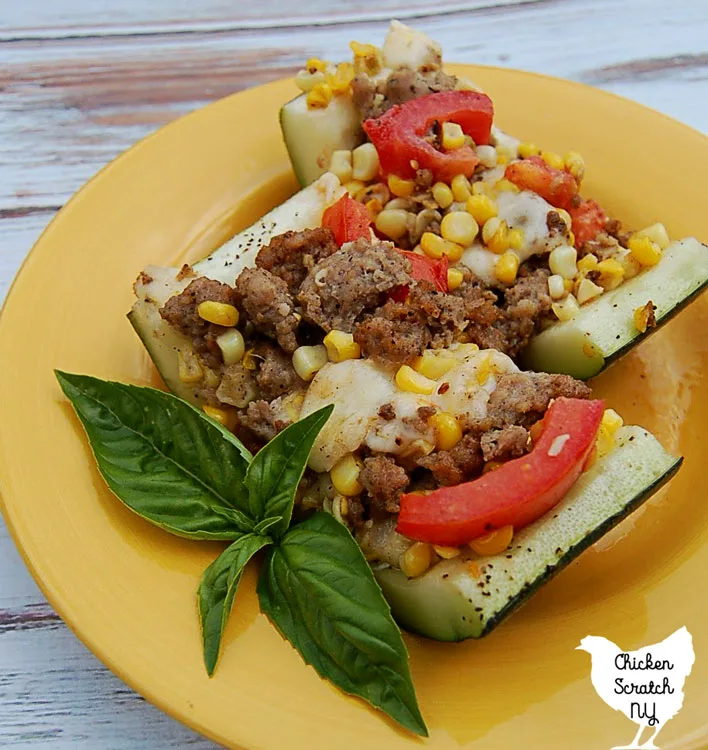
Unlike their very close relatives, the winter squash, and summer squash are eaten in the immature phase when the skin is still soft. They can be eaten from the tiny baby size all the way up to giant overgrown boats that can be hollowed out and stuffed if you aren’t in the mood for a canoe ride.
As they get bigger the flavor gets waterier and the flesh can get an unappealing stringy texture. One great thing about summer squash is they keep producing as long as you keep them picked so don’t feel bad eating them when they’re small.
The specific size will depend on the variety and type of squash but the seed packet will give you a good idea of when to start picking. And of course, you’ll have the opportunity for a little trial and error.
Get the Recipe for Farm Stand Stuffed Zucchini
If you forget about your squash (or let’s be honest, run out of room on the counter) the skins will get harder and the seeds inside with start to mature and harden. At this point, the plants will likely stop putting out new flowers.
You don’t have to let them go to waste though, either chop them up and throw the squash in the compost or feed them to your voracious flock of chickens.
Interested in keeping chickens? I’ve got you covered: Raising Chickens
Types of Summer Squash
One of my most closely held beliefs is that gardening should be fun and you should go out of your way to plant weird and interesting things. I have the luxury of a large garden and every year I grow a few different kinds of summer squash.
I’ve had the same favorite variety for a few years now but I’m always on the lookout for a new number one. Summer squash are grown from seed, most often planted directly in the soil, and it’s really easy to end up with half a dozen different varieties growing every season.
Read more about Ordering Seeds
Unless you really like zucchini bread or you have a large family that enjoys being saddled with free veggies, try not to get carried away with the number of plants you grow. If you want a larger variety try planting one of each type.
I have no self-control and I usually plant 6-8 each year, but I also have a ravenous flock of chickens that happily take care of the excess. A normal family will be happy with 1-2 plants per person.
All of the different types of summer squash are the same species and as a result, the breakdown between different types is pretty murky.
Zucchini
The classic summer squash most of us love (or loathe by the end of the season!) is the green zucchini. These summer squash are super popular and you can find about a million recipes featuring this lovely squash.
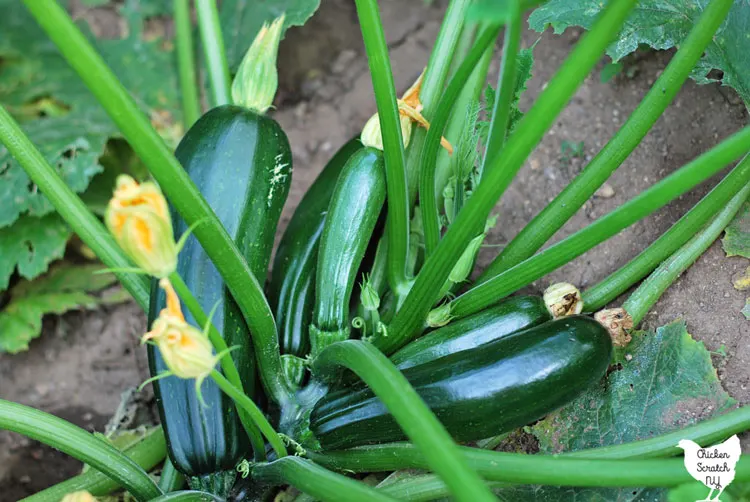
Zucchini tend to be green but you’ll occasionally see a yellow or bicolor variety. They have a straighter shape with a slight taper and when they get mature and overgrown the end begins to swell up like a bowling pin.
One of the most popular types of heirloom zucchini is Black Beauty, a variety from the 1920s is known for its deep green skin. My absolute favorite, which can not be beaten for flavor variety is Cocozelle squash. It’s an even older variety from the 18000’s with a light, mottled green color.
Ball Zucchini
Similar in flavor and color to the traditional elongated zucchini these fun summer squash are shaped like a little ball! There are a few different varieties of round zucchini including this speckled light green variety, the popular hybrid 8 ball, and the heirloom summer squash Tondo Scuro.

The fun shape makes them a big hit with kids (and 33 year old women). They’re also great for stuffing.
Straight Neck Summer Squash
When I was growing up we called anything green zucchini and anything yellow summer squash, even though zucchini are a type of summer squash.
Yellow summer squash comes in two varieties, with a straight neck, and with a curved neck. Straight-necked yellow summer squash look a lot like yellow zucchini.

They vary in color from pale to deep yellow. They can be used interchangeably with zucchini in recipes. This year I’m trying a new variety called Cube of Butter and I’m pretty excited to see how they turn out.
Crookneck Summer Squash
The second type of yellow summer squash are the crooked necked varieties. They’re less common today than the straight-neck types.
One thing to keep in mind with crookneck squash is the skin tends to harden up faster than with the straight neck varieties. Their skin isn’t smooth and has a bumpy texture.
In the past I’ve grown Early Summer Yellow Crookneck but I struggled with the squash turning hard before I got around to eating them. The flavor is great and it’s a classic heirloom vegetable for a reason but in the end I’ve found that other varities of summer aquash work better for my life.
Patty Pan Summer Squash
If you’re looking for weird this is the squash for you. Pattypan squash look like alien space ships.
They have the best flavor when they are small and look sort of like a fat jellyfish but make sure you let at least one grow until it looks like an X-Flies extra.
How to Grow Summer Squash
Summer squash grow on large plants that require lots of moisture and nutrition. They are considered heavy feeders in the garden.
It’s fairly common to have new plants growing in compost or even manure piles from discarded squash or pumpkin guts. As with most plants, they grow best if allowed to grow quickly and unimpeded.
I like to plant my summer squash in a garden bed that had been filled up with either alpaca poop or bedding scooped right out of my deep liter method chicken coop in the fall.
Usually by the time I’m ready to plant the earthworms have done their things and the poop has been worked into the soil. The extra organic matter does a great job holding onto water and adding more nutrients for the plants.
Summer squash plants are big compared to most of the things we grow in the vegetable garden but they’re actually pretty dainty compared to their crazy winter cousins. Instead of long trailing vines that scramble up and over anything that stands still long enough they maintain a bushy shape.
They should be planted in warm soil, about 70° F, well after the last frost date. These plants are sensitive little babies when it comes to cold weather!
You’re better off waiting an extra week for warm weather than trying to push them to start too early. The seeds you sow under better conditions will soon overtake the early plants that were stunted by cool weather.
It is possible to give your plants a head start indoors but you need to take care to start them in large pots (look for 4″ across the top) and get them out in the garden asap, by the time they’re 3-4 weeks old.
If you struggle with germination or hungry chickens digging up all of your seeds this might be a good route for you to take. Summer squash plants are quick growers and you’re perfectly fine just planting them in the garden.
Learn more about Starting with Seeds Vs. Starting with Plants
Plant your summer squash in direct sun about 18 inches apart. My entire garden is 4 foot wide beds, I plant two rows of summer squash with 18 inches between each plant in a bed.
If you struggle with cucumber beetles or late season temperature dips below 65° plant to cover your young plants with floating row cover until they begin to flower.
Squash plants have both male and female flowers and the first blossoms to open are usually male. The flowers are edible and you can eat almost all the male flowers without having any issues with pollination.
Read more about Edible Flowers
Plants will have both male and female flowers on them at the same time. You can easily tell the difference between the flowers by looking right behind the flower where it connects to the stem.

On female flowers there will be a swollen area where the stem connects to the flower, this is absent on male flowers. This will soon become your squash.
Growing Summer Squash In Containers
Thanks to their compact bushy growing pattern summer squash are a great option for container gardens. It is important to remember that they are large, hungry plants so give them a big pot and make sure they stay watered.
Stick with pots or growing containers that hold at least 5 gallons. This will provide ample room for a strong root system and keep your plants healthy.
I’m bad at watering and I avoid terra cotta like the plague, it sucks the moisture out of the soil and I just can’t be trusted to keep anything alive in it. However, if you are a better gardener than me you shouldn’t have any trouble finding large terra cotta pots.
Make sure you’re filling your containers with a potting mix intended for use in containers. If you’re going to fill them with regular dirt you’re better off just planting the seeds in the ground.
On a Trellis
With the exception of tromboncino (aka zucchini rampicante) summer squash all have a bushy shape and don’t require a trellis. The plants are small enough that you’d honestly be wasting the trellis, instead save it for cucumbers or a winter squash variety.
Summer Squash Companion Plants
Most home gardens are filled with companion planting by default, unless you’re growing acres of veggies there’s a good chance you’ve got different crops grown in close proximity.
When it comes to companion planting with summer squash there are two ways to go. You can plant a short-term crop that will be done by the time the monster plants get big enough to crowd them out or longer-term companions that are in it for the long haul.
If you are looking to fill up the space while your zucchini or pattypan squash fill in look for varieties with a short turnaround like lettuce, radishes or turnips. These crops will be out of the garden and into the kitchen by the time the summer squash plants reach their full size.
The other option is to plant something that can stand up to the competition offered up by the squash plants. The three sisters method of gardening is a really popular companion planting method that pairs squash, pole beans, and corn in one plot.
The three crops work together in a symbiotic relationship for mutual success. The corn (or sunflowers) provide tall support for the pole beans, the pole beans produce nitrogen and improve the soil while the large leaves of the squash plant shade the soil, retaining moisture and deterring weeds.
I’m fairly certain this methos id more common with trailing winter squash but the smaller summer squash plants will do a decent job providing a living mulch to the beans and corn.
Check out my Vegetable Garden page for more ideas or start here:


